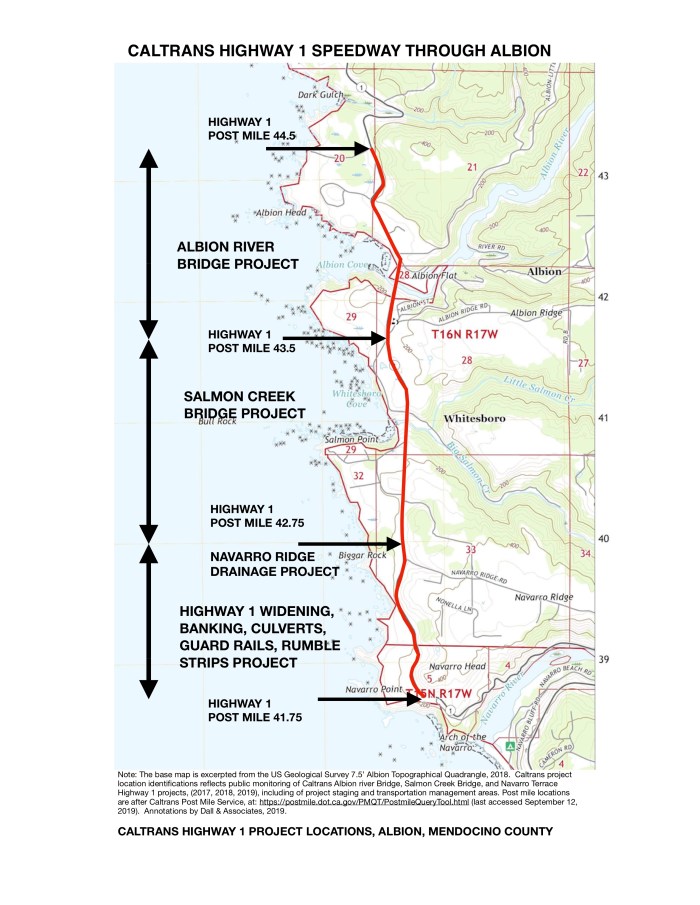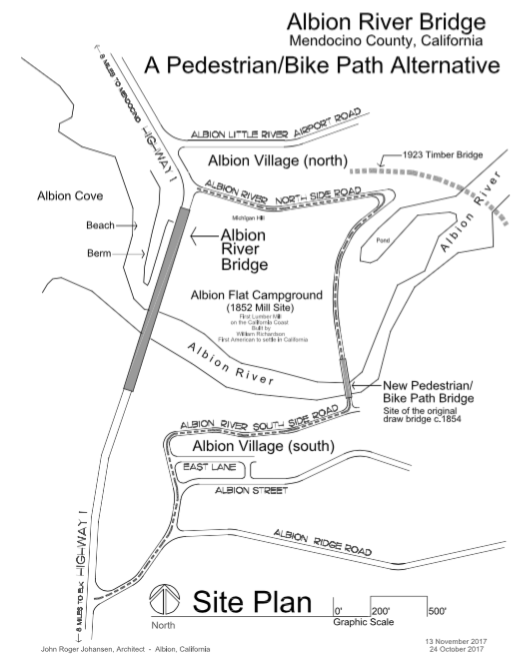Caltrans plans to put a two-lane expressway through Albion. The agency needs to change those plans.
Most people have already heard about Caltrans’ desire to replace the historic Albion River Bridge as well as the recently seismically retrofitted Salmon Creek Bridge — and along the way, nearly doubling the width of Highway 1 in the vicinity of those two bridges.
These are bad ideas. But it gets even worse.
Caltrans has now announced plans to widen Highway 1 starting at the Navarro Point Preserve and continuing north of Navarro Ridge Road.
The result would be a Highway 1 that’s up to twice as wide, stretching from the Navarro Point Preserve to the Albion River Inn. All so drivers can fly through Albion—and then slam on the brakes at the Navarro Grade or Dark Gulch.
Caltrans is proposing four overlapping projects that will cost at least $160 million and involve years of construction, lane and highway closures, significant grading and wetlands damage, destruction of sensitive plant and animal habitat, and huge impacts to visitor-serving facilities at Albion Flats, the Albion River Inn, and Navarro Point Preserve.
 The projects also involve the addition of rumble strips that will destroy the tranquil soundscape of the Navarro Point Preserve, and ugly “Midwest guardrail systems” that have no place in this highly scenic part of Highway 1.
The projects also involve the addition of rumble strips that will destroy the tranquil soundscape of the Navarro Point Preserve, and ugly “Midwest guardrail systems” that have no place in this highly scenic part of Highway 1.
Make no mistake: Highway 1 needs drainage and safety improvements in the Navarro Ridge area. But an expressway and years of construction are not the answer—just as huge new bridges are not the answer at Salmon Creek and Albion River.
With proper maintenance, better planning, and simple measures like reduced speed limits, Highway 1 and its Albion bridges can serve the public safely for decades—and with no environmental degradation and far fewer taxpayer dollars.
Caltrans is hosting a public meeting on Thursday, September 19 at the new Albion School, 30400 Albion Ridge Road, from 6:00 pm to 8:00 pm.
Attend this meeting and tell Caltrans that its plans for Albion are too much, too expensive, and completely unnecessary—that improved safety and drainage can be accomplished for a fraction of the cost. And demand that Caltrans produce an environmental impact report and environmental impact statement that takes into account all four projects as a whole, rather than attempting to piecemeal the projects, a practice that is prohibited under the California Environmental Quality Act.
Save Highway 1 through Albion. Tell Caltrans, “not so fast.”
